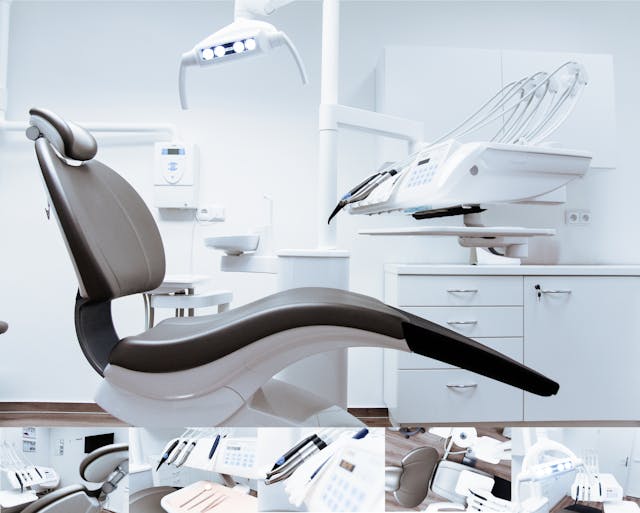Whether you’re a smartphone addict or anti-gadget, nobody can dispute the ways in which modern-day technological advancements have benefitted society in various realms. One example to look at is the health and medical field.
From research to practice, both professionals and patients alike have had their experiences improved in various ways thanks to new technology. Staying up to date is an important part of being a medical professional since improvements in the space are constantly being made.
If you’re curious as to how technology can improve the life of a healthcare practitioner, keep reading to discover nine useful devices in the space.
Electronic Lab Notebooks
First of all, electronic lab notebooks (or ELNs) have revolutionized note-taking and data collecting and tracking. The days of relying on paper-based lab notebooks are history in 2022, due to the efficiency and unrivaled capabilities of an electronic notebook.
The best electronic lab notebook software can make data collection, storage, and management far easier and more efficient for researchers in the medical field. With these new levels of automation and digitalization, medical research is progressing quicker than ever before – not to mention the fact that it’s not more easily shareable.
Digital Stethoscopes
Now, stepping away from the scientific, academic, and research side of the medical field and walking into the doctor’s office instead, an item that has brought incredible benefits is the digital stethoscope.
As a doctor, especially a general practitioner, a stethoscope is a necessary gadget – however, a digital one is far superior for various reasons. First of all, this gadget fits in the palm of your hand, and can easily record and store your patients’ information. It provides more accurate and detailed readings and allows you to zone in on a particular organ, such as the heart or lungs.
Infrared Vein Finders
Sometimes, finding that vein and getting it right the first time can be tricky, resulting in frustration for a practitioner and the patient being poked at. Many have reported that vein finders make the process far easier and more efficient, and thus far more comfortable for patients.
Drawing blood and inserting IVs is far easier with an infrared vein finder which will project infrared light onto your patient’s body and allow you to easily locate a vein as well as clumps and some other anomalies. These gadgets are compact and lightweight, making them easy to carry around, and their contactless nature means that they don’t require sterilization.
Wireless Blood Pressure Cuffs
New and improved blood pressure cuffs work with Bluetooth and send readings directly to an app or software programme. This is no major change to the way old-school cuffs work, but the newer design is more elegant and the way they work is impressive and seamless, relieving you of dealing with messy wires.
These are also easily available to the public which means that patients can take their own blood pressure to monitor their readings and even share them with their health practitioners.
Smart Glucose Monitors
For patients who struggle with diabetes mellitus types I and II, a glucose meter is important, and in 2022 they’re easier to use and more compact than ever. There are glucose meters that plug in and connect directly to your smartphone, providing you with immediate data, comparisons, trends and other types of analyses.
There are even glucose meters that don’t require a finger prick, which can make the process a little simpler and easier. These gadgets are incredibly useful for both patients (to monitor and share their data with their doctors) and practitioners who regularly might need to test and monitor their patients’ glucose levels.
Fitness Trackers
Smartwatches and other forms of fitness trackers have quickly become the most widely used health gadget on the market. These devices help you keep track of your daily activity, heart rate, stress levels, blood oxygen levels and even sleep quality.
Most devices are easily linked to fitness tracking websites and apps which will use data to provide reports and guidance for the user’s health and wellness journey. Not only are these great for providing doctors with insight into their patients’ general health, but can encourage a healthier lifestyle – allowing patients to improve their health and helping doctors to practice what they preach.
Infrared Thermometers
Thanks to Covid-19, we’ve found ways of doing just about anything and everything without any direct physical contact. Temperature taking I just one of these many things that can now be done (very effectively) from a distance.
The infrared thermometer measures your patient’s temperature without contact, reducing the risk of spreading infectious diseases and also eliminating the need for constant sterilization. These are helpful in protecting doctors and saving them time too.
Dictation Software
It’s been noted that doctors waste up to two hours a day writing or typing out notes and recording information manually. There are software solutions that connect doctors within a practice or network, making data sharing easier too.
This form of note-taking is useful for just about anyone and saves doctors a lot of time and effort in their consultation rooms. There are even free dictation apps suitable for use by health practitioners if committing to paid software isn’t an option.
Smart Pill Containers
Finally, smart pill containers might not be used directly by health care practitioners, but they’re an incredibly helpful gadget for patients on chronic medication or any type of prescription, and can even allow for doctors to manage and monitor their patient’s dosages.
Different smart pill boxes will work in different ways and have different functionality, but in general, these devices can remind patients of what to take and when and even dispense the correct dosage at the right time.
Conclusion
Overall, it’s clear to see the profound impact tech has made in the medical industry in the form of small, useful gadgets. This is not even to mention the huge leaps and bounds taken in medical equipment and tools used in surgical and other more serious environments.

